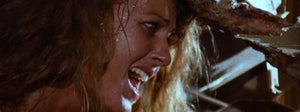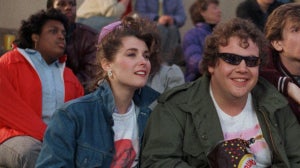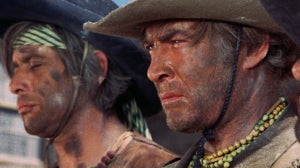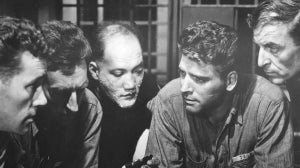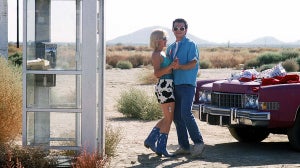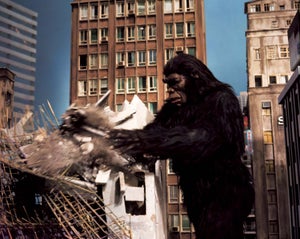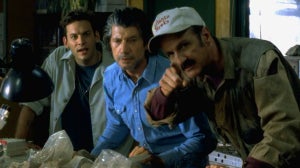
If history is circular, then one of its many, many inner rings of human de-evolution is the act of misplaced moral outrage. Loud throngs of the willingly blind gnashing their proverbial teeth while clutching their pearls about their children reading a book, listening to a song, playing a video game, or watching a movie that they deem offensive. Meanwhile, they refuse to talk with their kids, much less view them as individuals. That “children should be seen and not heard” twaddle has mainly begat generations upon generations of repressed adults with mottled communication skills.
Of course, in a world where victims of all ages and stripes are ignored, if not full-on silenced, the feeling of no one being safe is extremely tangible. So, whenever the morality squads come out yelling about the dangers of art on “the children” or society at large, (Sometimes at the hands of the malhearted censors themselves.) it is perversity at its saddest conclusion when one looks at the all too real dangers in the world. This, among a layer-cake full of reasons, is why horror as a genre can give us comfort while reflecting truth and fear.
For those outside the sphere of horror love (because fandom at this juncture feels too basic with whinging tendencies), they tend to just see the genre as being riddled with obvious ballyhoo of shredded flesh, sharp knives, loose women, and the pagan implications of the supernatural. Granted, when it’s broken down like that, it is part of the luscious carnival of our id. But like a red-lipped, sequin-dress-wearing shimmy queen with dueling scar, there is more than meets the eye, because in horror, among the themes of fear of the unknown, torture, and death is the deep-rooted fear of being ignored. After all, what do you do when the wolves are baying at your door, but the voice on the phone tells you that you’re imagining things and to go back to bed?
Now, if one was to do a proper deep dive on this subject in horror cinema, they better prepare to start writing the tome of tomes, from nitrate prints to digital streaming. In lieu of that, here is a wee taster on the topic with the main film that immediately flooded my mind that possessed such a terrifying premise.
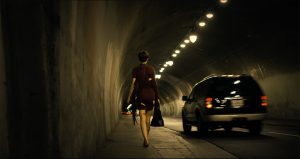
In 1985, Tom Holland wrote and directed a film that ushered the vampire mythos into modern-day upper-middle-class America with Fright Night. Our teenage protagonist, Charlie Brewster (William Ragsdale) is a clean-cut everyman with a love of horror movies, a cute girlfriend, Amy (Amanda Bearse), and a weirdo misfit bestie nicknamed Evil Ed (Stephen Geoffreys in a scene-stealing performance). He has a loving single mom who works a lot, which would explain their nice house and the quiet, nearly idyllic neighborhood they live in. But Charlie’s problems soon become far bigger than just trying to get Amy to go all the way when his new neighbor, Jerry Dandrige (Chris Sarandon) and his eccentric roommate/manservant/possible lover Billy (Jonathan Stark) move in next door. Peeping from his bedroom window at night, Charlie sees Jerry for what he truly is…one of the supernatural realm’s most efficient and seductive serial killers: a vampire. Suddenly, all the news reports about women turning up missing makes sense.
From there, Charlie has the uphill battle of trying to call attention to the predator in their midst, where no one believes him. Amy and Ed are skeptical, as is Brewster's hero, former actor/current local TV horror host Peter Vincent (Roddy McDowall). Things go from bad to worse as he ends up on Dandrige’s radar. Jerry not only embarrasses Charlie in front of the police, but even his own mother, gaining her trust enough to be invited inside their home. So, what does a young person do when neither adults nor peers will listen when immortal danger is knocking on his door?
Sarandon’s Jerry Dandrige is so perfect. He’s handsome, intelligent, and charming to a disarming degree. In other words, the perfect predator or abuser who can play into the infuriating refrain of, “Oh, he could never do something like that.” Like life has a code that smart, good looking people are automatically lacking in any bad actions. The figures in Charlie’s life that should be his protectors, like his mother or the authorities, are rendered useless by the very figure who threatens him the most. Only Peter Vincent, who is treated like yesterday's old news, comes to Charlie’s help once he too realizes Jerry’s true nature.
Not believing instantly that someone is a centuries old supernatural creature is understandable, but like so much cinema and literature, the metaphor is just a skipping stone away from so many real life scenarios where victims are afraid to even tell anyone in authority because they fear the repercussions. No one likes to be mocked or isolated by their peers, loved ones, or society. Personally, I have had too many friends and loved ones who have suffered abuse, particularly sexually, that never told any authorities, much less a family member, because of “Who would believe me?” (In some cases, the abuser was a family member, further mucking up an already nightmarish situation.) Yet, Fright Night is just one of many, many genre films that feature protagonists who are all but abandoned by those with supposed power around them.
https://www.youtube.com/watch?v=kLVwFRwZols
In fact, authority figures are often rendered neutered in horror and science fiction when it comes to anyone being genuinely preyed upon. Turning to the cops, government officials, teachers, psychologists, and especially one’s own family rarely, if ever, works out save for the predator themselves. It’s a scenario that is often bleak to the extent that the best-case outcome is just being dismissed. The worst-case scenarios can entail incarceration or being committed to a psych ward. For example, in From Beyond (1986), a film absolutely lush with imagination-breaking special effects and tremendous body horror, the most disturbing scene is seeing our heroine, Dr. Katherine McMichaels (Barbara Crampton), being prepped for electroshock therapy against her will. If not being listened to in a time of mortal need isn’t scary enough, being robbed of body autonomy is even more terrifying.
This is all just a small example of the terror of being ignored at your most vulnerable and, in some cases, life threatening, moment. In light of topics like the MeToo movement, mass corruption with political figures being intertwined with child traffickers like Jeffrey Epstein, and victims rights coming more and more to the forefront, horror continues to help us understand and cope, as recent as 2021’s Take Back the Night. So, remember, anyone that tries to censor art and especially horror, might be more of a beast than any glowing-eyed entity with sharp fangs and a taste for your grue. To quote Angela Carter’s The Company of Wolves, “...she knew the worst wolves are hairy on the inside.”

Related Articles
